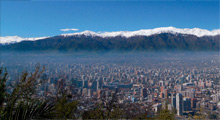The Chilean Earthquake and Tsunami: World’s Second Most Expensive Earthquake for the Insurance IndustryNATURAL PERILS
Marcelo Ulloa. General Manager MAPFRE RE Chile
Cost to the insurance industry
According to estimates, the earthquake that rocked Chile on 27 February 2010 will cost the insurance and reinsurance industry between USD 8,000 and 10,000 million. The cost has to be stated as a range due to the difficulty of assessing the damage caused by the Business Interruption cover that affected industrial risks. Quantifying and appraising the damage in terms of lost productive activity is proving to be a complex task, given that there is no uniformity of wording for the clauses relating to cover of this type.
Almost all of these losses will be borne by the global reinsurance companies, because the local insurers transfer these risks to them on account of their catastrophic character.
Volume of claims filed
The insurance companies’ local structures were never expected to deal with the numbers of claims that have been filed. According to figures issued by the Chilean Superintendency of Securities and Insurance (Superintendencia de Valores y Seguros, SVS) on 31 August 2010, the number of claims had reached 222,065 of which 190,199 involve residential risks and 31,866 relate to losses on risks outside the residential sector, such as offices, commercial risks or other businesses. These figures represent more than eight years of claims for the fire line, creating a situation that has tested (and indeed stressed) the capacity of insurance companies and adjusters to respond to such an enormous level of demand. They have been forced to draw on vast quantities of human and IT resources in order to complete the required settlement and payment procedures in due time and manner.
Relationship to premiums
It has become obvious that the rates for catastrophe lines were insufficient in view of the economic and financial impact on the insurance sector and the insureds. The costs of the earthquake and the subsequent tsunami far exceeded the sums collected in catastrophe premiums during the last 30 years. The reinsurance industry reacted by adjusting the terms and conditions offered for renewals after this unfortunate event, for proportional as well as non-proportional contracts; this was done by increasing rates, reducing commissions and setting limits per event and contract period, among other measures.
Analysis of portfolios
This experience again made it clear that there is no homogeneity among the various portfolios and cedents as regards their profile/exposure to events of this sort; until now, of course, reinsurance premium contributions were treated in a manner more akin to commodities, with no notable differences in terms and conditions, especially in Cat XL treaties.
Catastrophe capacity
Despite the numerous losses sustained by the reinsurers, there has been no visible reduction of the catastrophe capacity available for the local market. This fact is highly relevant for Chile in view of the economic and social role that is played by the reinsurance industry.


